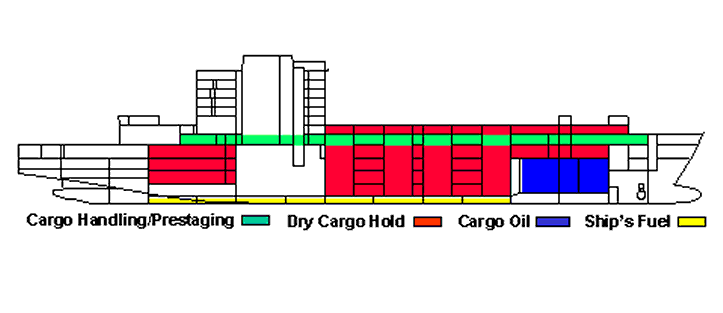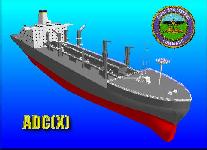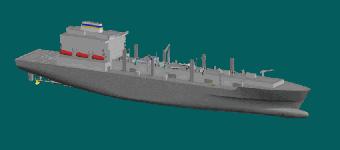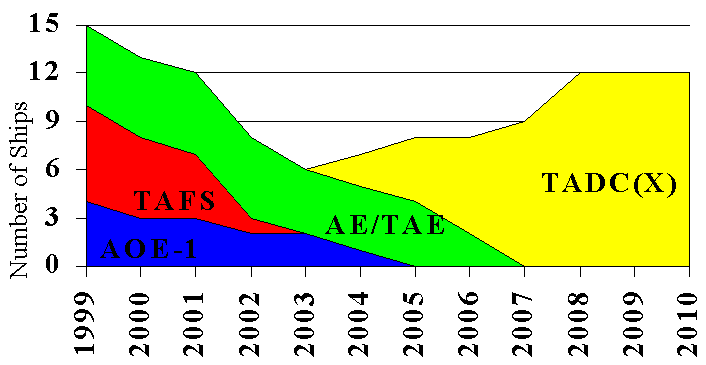
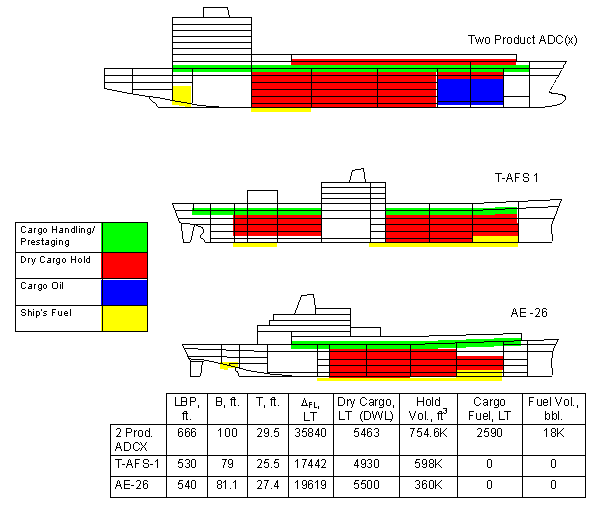






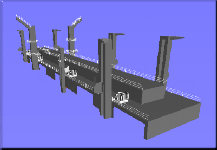
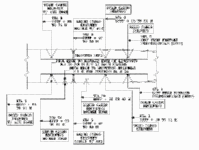 The ADC(X) will use standard US Navy Underway Replenishment (UNREP) equipment or improved
systems developed by industry. The transfer rates for ammunition and stores must be at least equal to those of the AOE 6 Class. The ship will be capable of landing, fueling and maintaining two H-46D helicopters (and its follow on replacement), with hangar space for both helicopters.
The ADC(X) will use standard US Navy Underway Replenishment (UNREP) equipment or improved
systems developed by industry. The transfer rates for ammunition and stores must be at least equal to those of the AOE 6 Class. The ship will be capable of landing, fueling and maintaining two H-46D helicopters (and its follow on replacement), with hangar space for both helicopters.
The ADC(X) will be built to commercial standards to the extent practicable in order to minimize cost and accommodate the possibility of civilian manning (Military Sealift Command (MSC) crews). The Government is interested in industry innovations and invites recommendations on commercial alternatives that will reduce life cycle cost and improve efficiencies.
The ADC(X) program will be especially critical to demonstrate America's ability to produce affordable and flexible container-type ships without going overseas. These ships will contribute to America's overall shipbuilding infrastructure because their design will be a common hull having tremendous application to the civilian shipbuilding industry. ADC(X) represents the re-capitalization of the Navy's sealift needs, and will greatly impact America's ability to competitively build ships on the civilian market. Although the final determination has not been made, ADC(X) will likely be a "Charter and Build" program similar to production of the successful MPS ships in the 1980s. The Navy was were asked to pursue Charter and Build by DoD's Defense Planning Guidance (DPG). The ADC(X) program will provide additional work for commercial US shipbuilders, and will utilize the US Merchant Marine by employing the expertise of the industry and providing additional sea-going jobs. The end force structure will be such that it meets the requirements of the CLF Master Plan, which is being developed as a product of the ADC(X) Analysis of Alternatives (AoA). The preliminary results of the AoA indicate a need for 10 to 15 ADC(X) Class ships to meet the peacetime and wartime lift requirements. Details of the acquisition strategy for use of this performance specification are in the formative stages; however, approximately 12 ships of the T-ADC(X) line are anticipated. Initial procurement will commence in FY 2000. Achieving Initial Operating Capability (IOC) in FY 2005 is desired and will occur after lead ship Post Shakedown Availability (PSA). The FY 2001�2005 shipbuilding program procures 11 T�ADC(X) dry�cargo ships, completing the planned 12�ship buy. The program also accelerated the procurement schedule relative to previous plans, funding three ships per year in FY 2002 and FY 2003. These new multiproduct vessels will replace aging T�AE and T�AFS ammunition and dry cargo ships and AOE�1 fast combat stores ships. They will be used to carry both dry and refrigerated products as well as ammunition and a limited amount of fuel. To improve affordability, the ships will be procured using commercial business and construction practices to the maximum extent possible.
Specifications | ||
| METRIC | Customary | |
| Length Overall | 210 M | 689 ft |
| Beam | 30.5 M | 100 - 105.6 ft |
| Full Load Draft | 8.9 M | 28.9 - 29.5 ft |
| Light Ship Displacement | 18,157 MT | 17,871 LT |
| Full Load Displacement | 35,850 LT | 34,416 MT |
| Sustained Speed | 20 kts | 20 kts |
| Endurance (25,000 bbl) * | 11,535 nm | 11,535 nm |
| Dry Cargo Weight | 5,550 MT | 5,463 LT |
| Dry Cargo Stowage Capacity | 31,396 m3 | 1,108,592 ft3 |
| Cargo Staging Area | 12,788 m3 | 451,544 ft3 |
| Cargo Fuel Weight | 2,427 MT | 2,390 LT |
| Cargo Fuel Volume | 2,858 m3 | 18,000 bbl |
| UNREP Gear | Fueling at Sea Stations Port Side - 1 sending Starboard Side - 1 sending & 2 receive Replenishment at Sea Stations Port Side - 3 sending Starboard Side - 2 sending & 1 sliding padeye receive Elevators Six 16000 lb elevators - 2 per hold |
|
| * Endurance above 10,000 nm is considered cargo fuel. | ||
Ships | ||||||
| Name | Number | Builder | Homeport | Ordered | Commissioned | Decommissioned |
| ADC-1 | 2000 | 2003 | ||||
| ADC-2 | 2001 | 2004 | ||||
| ADC-3 | 2002 | 2005 | ||||
| ADC-4 | 2002 | 2005 | ||||
| ADC-5 | 2002 | 2005 | ||||
| ADC-6 | 2003 | 2006 | ||||
| ADC-7 | 2003 | 2006 | ||||
| ADC-8 | 2003 | 2006 | ||||
| ADC-9 | 2004 | 2007 | ||||
| ADC-10 | 2004 | 2007 | ||||
| ADC-11 | 2005 | 2008 | ||||
| ADC-12 | 2005 | 2008 | ||||


